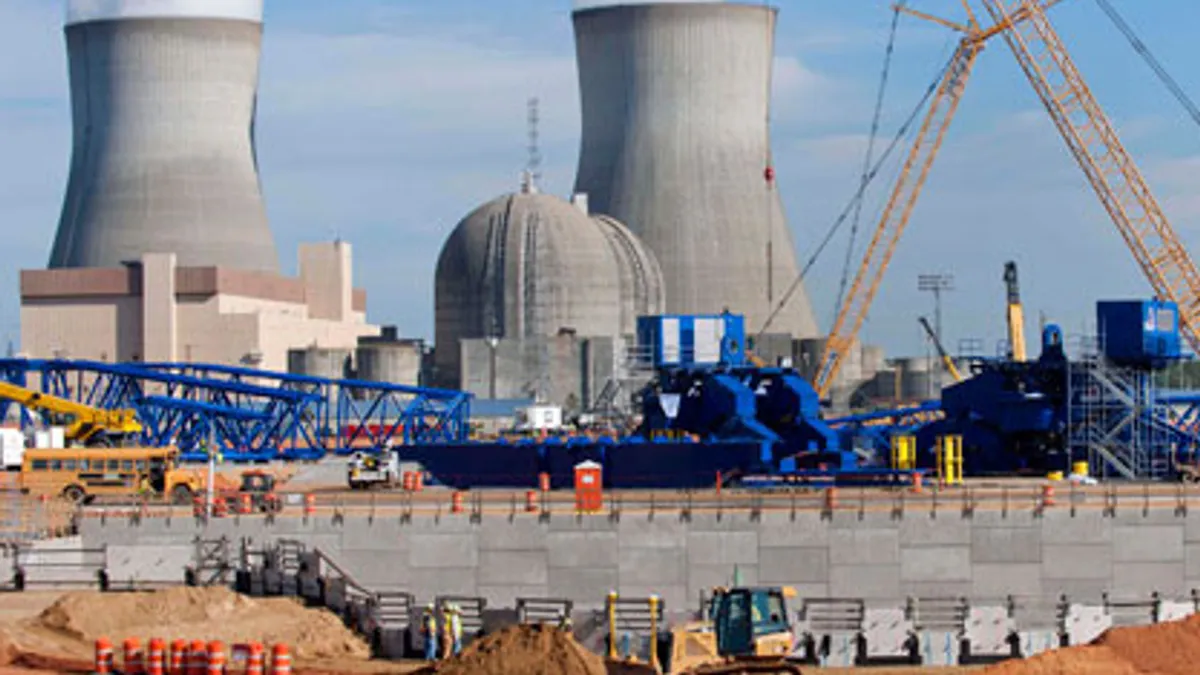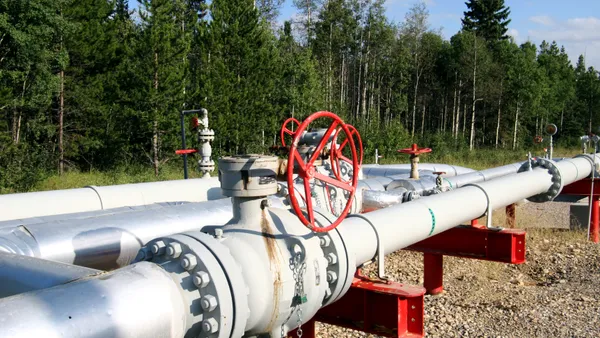Dive Brief:
- Southern Company announced plans to achieve net zero carbon emissions across its system by 2050 during its annual shareholder meeting on Wednesday, after setting a "low- to no-" carbon by 2050 goal in 2018.
- CEO Tom Fanning said the company is pacing ahead of meeting its midway climate commitment: to reduce the company's emissions 50% below 2007 levels by 2030 — a goal that might be achievable by 2025. The company said it can invest in tree planting or in carbon reduction technology to offset emissions from fossil-fuel powered generation and achieve its net zero goal, but Fanning did not announce any other commitments on coal plant retirements.
- Several shareholders, including mutual funds, praised Southern for its carbon reduction commitment, according to the sustainability nonprofit Ceres, but Sierra Club criticized the lack of details on coal plant retirements.
Dive Insight:
Southern joins other recent utility climate commitments in the region: Duke Energy pledged to make its electric business carbon neutral by 2050 and Dominion Energy must comply with Virginia's new law to have an emissions-free power sector by 2050.
The commitment "demonstrates Southern Company is willing to listen, and act, to address the long-term needs of all stakeholders alike — customers, employees and shareholders," Rebecca Myatt, portfolio manager for Southern shareholder First State Investments Global Listed Infrastructure, said in a statement.
Other shareholders, like Praxis Mutual Funds, also applauded the net zero goal.
"For Southern, as with other companies in the electric power sector, achieving net-zero carbon emissions by 2050 will require fundamental realignment of both planned capital expenditures and policy influence activity," Majority Action, a nonprofit dedicated to engaging with shareholders, said in a statement.
But Sierra Club criticized the company for not announcing any coal plant retirements of its existing coal-fired plants.
"This plan is not aggressive enough, and it's too light on details to form an opinion about," Stephen Stetson, senior campaign representative for Sierra Club's Beyond Coal campaign, told Utility Dive.
Details were sparse in Southern's presentation, but Fanning emphasized the potential of energy efficiency and direct air carbon capture to help achieve the net zero goal.
"[W]e will continue to reduce our greenhouse gas emissions, and continue our long-term commitment to energy efficiency. But also incorporate negative carbon solutions including technology-based approaches such as direct air capture of carbon, as well as natural methods like afforestation," he said.
Southern's research and development team has been working on carbon capture technologies, but Stetson said goal-setting with technology that hasn't been realized yet on a large-scale is not realistic at this time.
Southern Company has "some places that are geographically well-suited to putting carbon underground, but there's no sense of where that road is leading... there's no market for [carbon]," he said.
The Southeast has a lot of potential to increase solar deployment, Stetson said. Georgia Power included 2.2 GW of solar in its latest integrated resources plan (IRP), and climate groups expect more.
The net zero goal makes sense for the climate and for economic reasons, according to Southern.
While Alabama does not have an open IRP process, Southern subsidiaries have indicated in their most recent IRPs in Georgia and Mississippi that generation planning is based on affordability, not driven by the company's previous low-to-no carbon plans, Stetson said.
"Our enterprise-wide carbon goals are aligned with a long-term business strategy and our commitment to support our customers' needs and preferences," Southern spokesperson Schuyler James Baehman told Utility Dive via email. "In continuing to make decisions that are in the best interests of our customers, each of our state-regulated entities will actively work within its regulatory framework to ensure that carbon reduction efforts serve our customers over time."
"When we set our 2030 goal to reduce GHG emissions by 50% from 2007 levels, Southern Company relied on the 2030 projections from the joint, customer-focused integrated resource planning process that has been used for decades by Southern Company’s retail electric utilities," Baehman said.
CORRECTION: A previous version of this article used an older title for Stephen Stetson. He is the senior campaign representative for Sierra Club's Beyond Coal.















